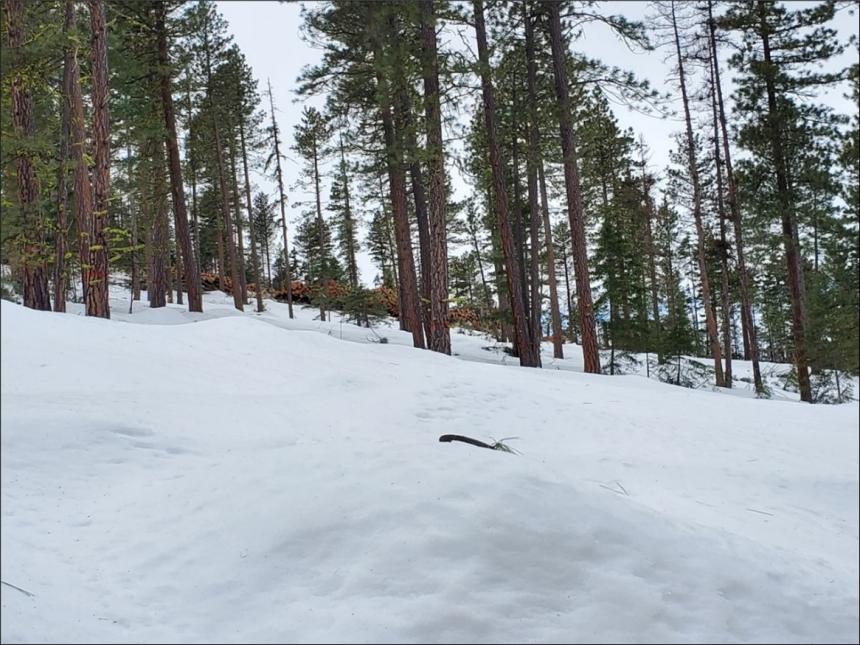
Wildlife Program report: Jan. 16-31, 2023
Conserving Natural Landscapes
Colockum Wildlife Area Thinning: Thinning on the Colockum Phase One Restoration Thin Project continued with favorable winter conditions. Good winter weather conditions are ideal for minimizing soil disturbance and damage to roads. The contractor is working hard to finish work in Unit One (265 acres) before spring weather conditions move in. If all goes as planned, cutting should be finished by Feb. 3. The remaining logs in Unit One should be skidded, processed, loaded, and hauled to area mills by Feb. 17. After the last logs are removed, operations will be suspended until the end of April or May after the snow has melted and soils are dry again. Work on the project will then continue until the middle of October, weather permitting.

Pile Burning on the Chelan and L. T. Murray Wildlife Areas: As overstocked forest stands are thinned the harvested trees are delimbed and unmerchantable portions of the tree, such as the very top and broken branches, are left on site. A portion of the debris is intentionally spread throughout the project area to put nutrients back into the soil, provide habitat, allow for prescribed fire operations, and to stabilize soils. The remainder of the debris is put into piles. All the debris is not spread throughout the project area because there is typically too much wood and excessive amounts of fuel increases the fire severity risk to the landscape. While some piles are retained as wildlife habitat, many are burned. When it comes to burning the piles, planning is crucial. A minimum depth of four to six inches of snow is desired to prevent wildfires. Staff members must consider the weather to ensure that winds won’t carry smoke from the burn piles to populated areas.
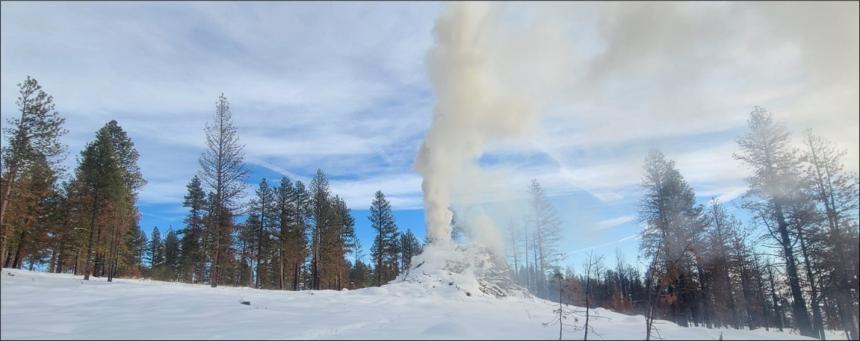
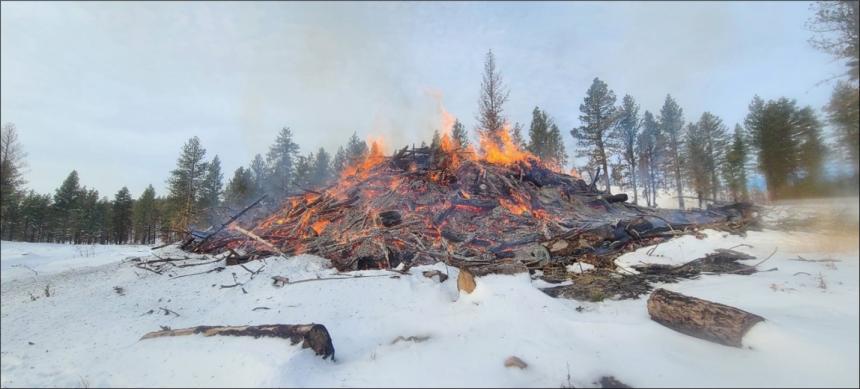
Scatter Creek Oak Woodland Restoration: Technician Waxwing cleared and piled invading trees and brush from five acres of oak woodland in the Scatter Creek Wildlife Area. Treatment was completed in the winter when sensitive understory plants are dormant. Full restoration, however, is a several year process. Ideally, prescribed fire and seeding of native wildflowers will follow within a few years. Federally threatened mazama pocket gophers will likely move into this area after restoration is completed as they have in similar, nearby areas after they were treated.
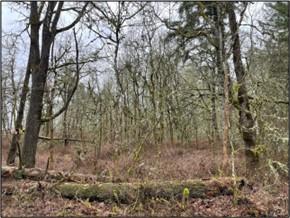
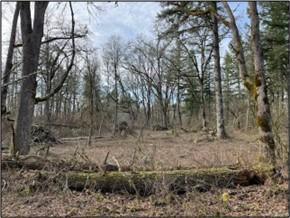
Scatter Creek Wildlife Area Units: Technician Morgan spread gravel at the Scatter Creek North Office area, calibrated and sprayed a selective grass herbicide at the Scatter Creek South C1 and C2 Burn Units, seeded the C2 Unit, planted bulbs at the D1 Unit, mowed Scotch broom in the restoration area of Scatter Creek South, assessed and repaired the main gate and finished construction of foot access at Davis Creek, removed some downed trees from trail at Violet Prairie, seeded West Rocky Prairie Unit G, removed blackberry at the South Puget Sound Wildlife Area around the orchard, and sprayed mustard rosettes at Protection Island.
North Puget Weed Crew: Local Weed Coordinator Zimmerman picked two sign design alternatives for the Island Unit that would meet weed crew needs. They provided a draft digital document of the weed crew’s extensive use of the Island Unit to Greg Meis and talked about vegetation management improvements at the wildlife area.
Coastal Invasive Species and Exotic Pest Workshop: Statewide Weed Coordinator Heimer attended and helped plan a Coastal Invasive Species and Exotic Pest Workshop with several Washington and Oregon partners to be held in Astoria in April.
Conducting Business Operations and Policy
LINK Database: Range Ecologist Burnham collaborated with Wildlife Science Division staff members who have begun building processes to improve the process of reviewing permits and leases.
Wildlife Program School: Range Ecologist Burnham attended Wildlife Program School in Wenatchee and delivered a presentation addressing possible objectives for, and current scientific literature perspectives on, grazing as a form of fuels management in rangelands.
Simcoe Mountains Cultural Resource Management: Range Ecologist Burnham attended the latest Simcoe Mountains Cultural Resource Management meeting in Goldendale. The group completed work on the final draft chapter of the plan, which has been delivered to WDFW staff members for preparation and formatting. Public meetings for receiving comments are tentatively scheduled for February.
Other
Budget Reprioritization Criteria List: Statewide Weed Coordinator Heimer worked with local weed coordinators Holcomb and Zimmerman and added one-time items to the Budget Reprioritization List (BRC) to secure additional funding for weed priorities including equipment and staffing.
Aquatic Noxious Weed National Pollutant Discharge Elimination System Permit: Statewide Weed Coordinator Heimer participated in a meeting with Shawn Ultican (Department of Ecology), Todd Palzer (Department of Natural Resources), Chad Phillips and Greg Haubrich (Washington State Department of Agriculture) and Keith Folkerts (WDFW Habitat Program) to discuss a reissuance of a new Aquatic Noxious Weed National Pollutant Discharge Elimination System Permit in 2024. After the meeting, Heimer responded to several question Folkerts had regarding the permit.
Legislative Work: Statewide Weed Coordinator Heimer reviewed potential legislation and completed bill analyses for Senate Bill 5143 and House Bill 1019. Heimer also started reviewing changes to Senate Bill 5638 (RCW 36.61 Lake and Beach Management Districts) that denies public agencies’ ability to vote for or against the formation, eliminates or restricts costs and indirect costs associated with managing a district by a municipality, and increases secrecy in voting.
Managing Wildlife Populations
North Puget Lowlands Swan Surveys: With the help of numerous partners and volunteers, Districts 14 and 13 wildlife biologists completed annual surveys of wintering populations of swans throughout the lowland areas in Whatcom, Skagit, Snohomish, Island, San Juan counties, and the Snoqualmie Valley in King County.
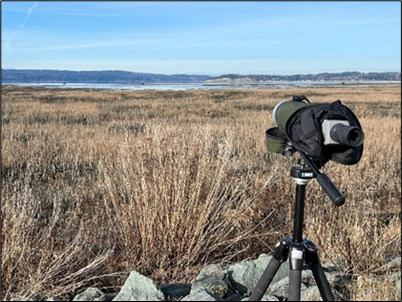
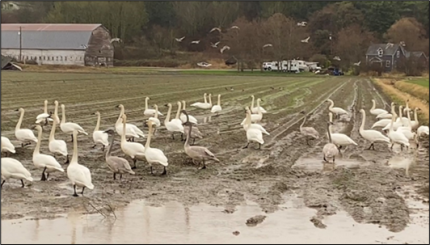
Puget Sound Ecosystem Monitoring Program Flights: District Wildlife Biologist Licence participated in multiple survey flights as an observer in training with Waterfowl Section and District 15 biologists. These long-term annual surveys provide population trend monitoring for a variety of marine waterfowl, birds, and mammals throughout the Puget Sound.
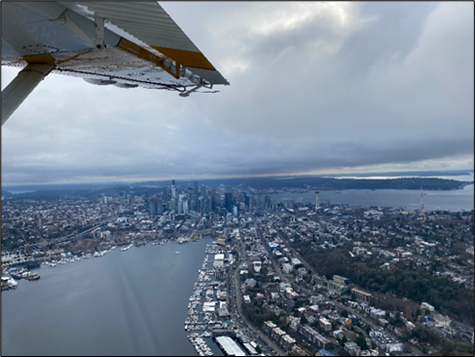
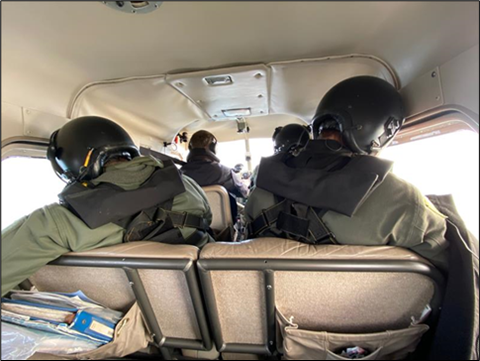
Harmful Algal Blooms and Wildlife Meeting: Region 4 wildlife biologists, wildlife health staff members, Whatcom County Health Department, and a Portland State University researcher gathered on Jan. 24 to discuss harmful algal blooms and their impacts to wildlife. Discussions centered on known local wildlife impacts, research priorities, and potential funding opportunities.
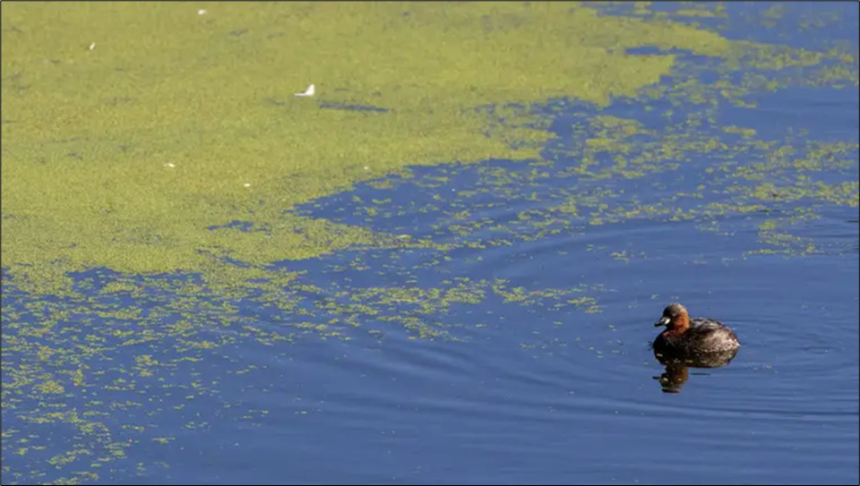
Providing Conflict Prevention and Education
Cougar Sightings in Concrete: District Wildlife Biologist Waddell spoke at a Concrete town council meeting about recent cougar sightings in the Concrete area. He provided some basic information on cougar biology and emphasized that cougar attacks on humans are very rare. Additionally, he provided meeting attendees with steps to prevent attracting a cougar (e.g., keeping domestic cats inside, avoid feeding deer, and practicing good husbandry of livestock) and tips if they encounter a cougar or feel that a cougar is a threat to them or their property. Biologist Waddell encouraged residents to visit the WDFW webpage on cougars and to view cougar-related videos on the WDFW YouTube page.
Conserving Natural Landscapes
Little Squalicum Estuary Restoration: District Wildlife Biologist Waddell volunteered to assist with planting vegetation at the Little Squalicum Estuary restoration project in Bellingham. This project will restore almost five acres of habitat, including 2.4 acres of estuary. This project will improve fish passage and provide high quality habitat for fish and other species. The Saturday volunteer project turned out to be a beautiful day. More than 230 volunteers planted over 4,000 upland and aquatic plants.
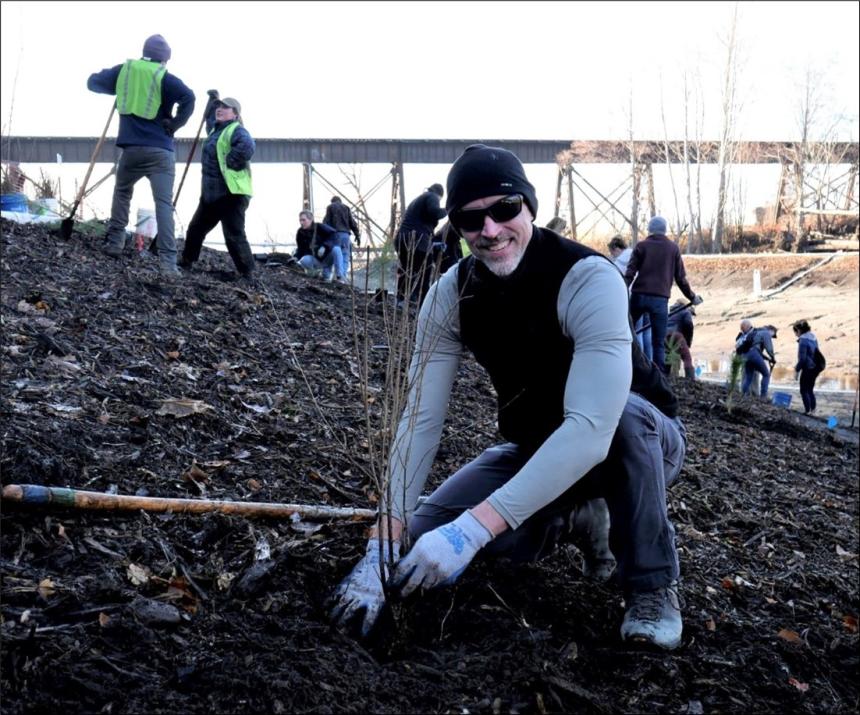
Managing Wildlife Populations
Mule Deer Captures: In Game Management Units (GMU) 388 and 382, a total of 22 mule deer were captured by helicopter using vendor Leading Edge Aviation. These deer are part of a study identifying deer migration corridors as well as summer and winter ranges funded by Secretarial Order 3362. When the GPS-collared deer die, WDFW staff members investigate as soon as possible so that cause of death might be determined. There are currently 80 mule deer with these collars which will drop off just before the batteries die in mid-2024.
Klickitat Deer Mortality Investigation: Wildlife Conflict Specialist Jacobsen received a mortality notification from a GPS collar that had been placed on a mule deer doe in east Klickitat County. Jacobsen investigated the mortality scene and determined that a very large bobcat was most likely responsible for the depredation. This doe was part of a four-year study being conducted throughout GMUs 388 and 382 to track the annual movements of female mule deer and locate important migration corridors. Staff members also attempt to determine cause of death when a collared doe dies.
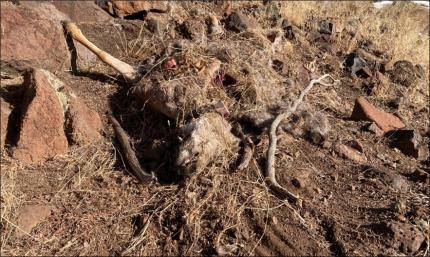
Bobcat Pelt Sealing: Wildlife Conflict Specialist Jacobsen sealed two bobcat pelts as required by the Convention on the International Trade of Endangered Species (CITES). Though bobcats are not endangered in Washington, all harvested bobcats in the state must be officially tagged, as bobcat pelts can be traded or sold internationally.
Dusky Goose Survey: Biologist Stephens conducted a dusky Canada goose survey in Wahkiakum County including the Julia Butler Hansen Refuge which WDFW is covering while the United States Fish and Wildlife Service (USFWS) fills a vacant biologist position. Dusky Canada geese were observed on the Refuge, seven of which were collared with unique alpha-numeric codes. This subspecies of Canada goose is collared on its breeding grounds in Alaska and the collars are read on their wintering grounds in Washington and Oregon to generate a survival estimate.
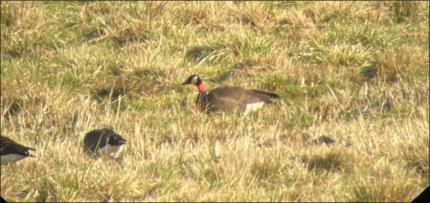
Bat Hibernacula Surveys: Biologists Stephens, Holman, and Wickhem from Region 5 along with statewide Bat Specialist Tobin, Bat Technician Leipold, partners with the U. S. Forest Service, and volunteers conducted bat surveys in hibernacula caves near Mount Saint Helens. A combination of hiking, skiing, snowshoeing, and snowmobiling were employed to access the caves. The purpose of the survey was to count Townsend’s big-eared bats and Myotis spp. in caves that are surveyed annually and to swab bats to sample for Pd (Pseudogymnoascus destructans), the fungus that causes white-nose syndrome. The counts were up slightly from previous years.
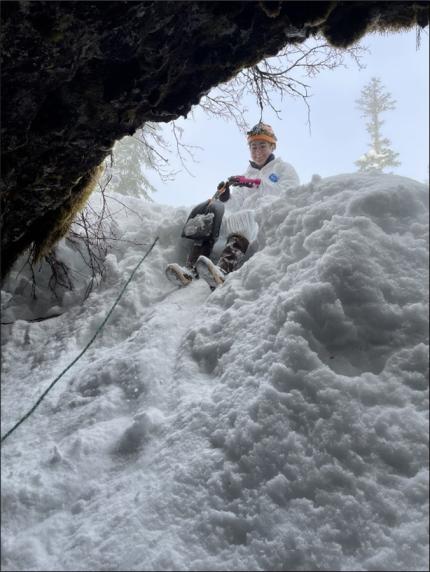
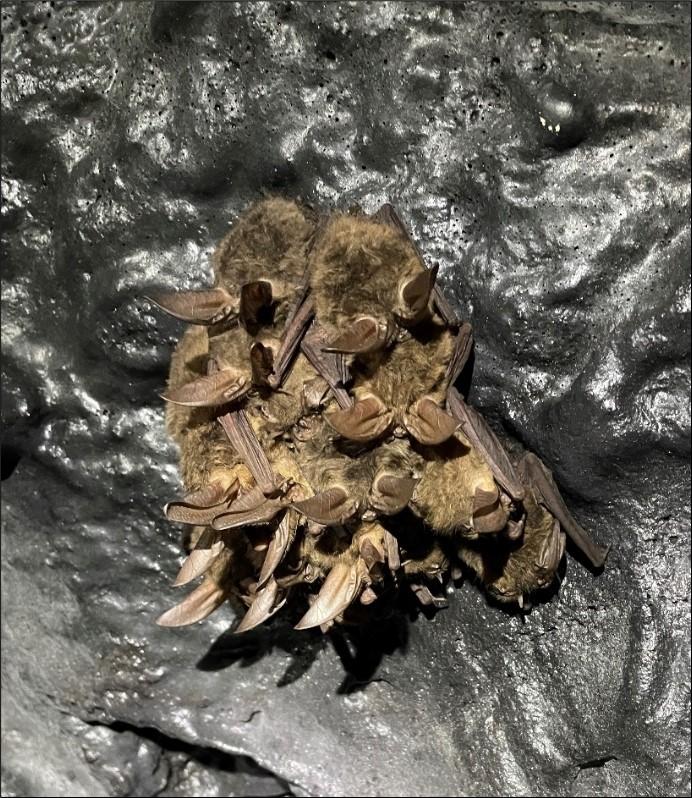
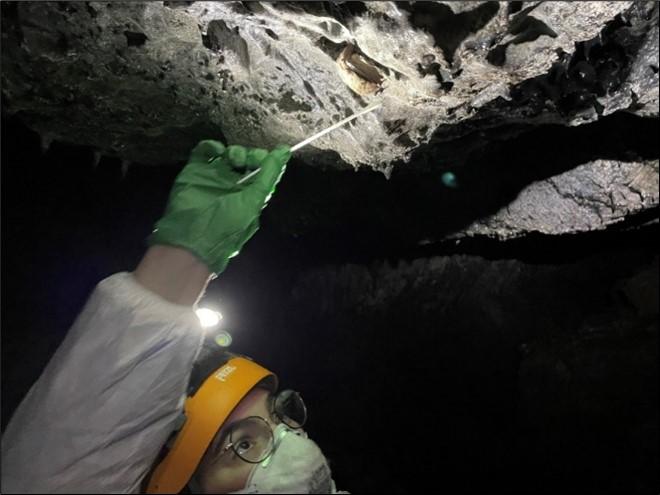
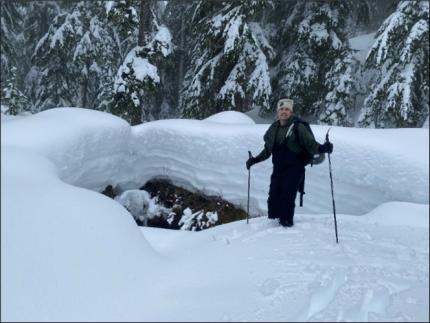
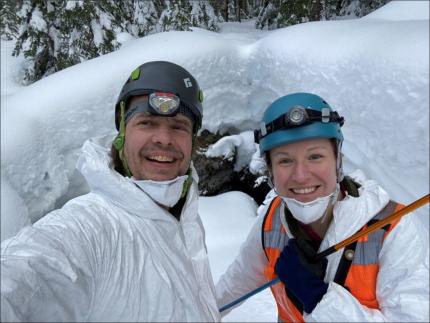
Pronghorn Survey Flights: Biologists Wickhem and Fidorra conducted survey flights for pronghorn antelope in eastern Klickitat, southeastern Yakima, and western Benton counties this month. Yakama Nation Biologist Olney and Technician Heemsah surveyed the adjacent areas within the Yakama Nation Reservation. Pronghorn were extirpated from Washington by the early 1900 but were reintroduced by the Yakama Nation in 2011. Between 2011 and 2019, 198 individuals were successfully relocated from Nevada to the Yakama Reservation and have since dispersed from their release locations and often spend time off-reservation. These surveys are meant to get a minimum count and are conducted with a fixed-wing aircraft. The crews fly north-south transects that are two kilometers apart and when a group of pronghorn are located, the plane circles the group, takes a count and GPS point. A group of volunteers on the ground also drive through the survey area and help locate groups to assist the flight crew. On this survey, 212 pronghorn were counted (98 on-reservation and 114 off-reservation) which is lower than previous surveys in 2019 and 2021, which each counted approximately 250 animals. However, the groups that were located this year were extremely hard to see thanks to poor lighting and fields that were exactly the same color as the antelope. The crew will investigate how the survey can be improved in the future.
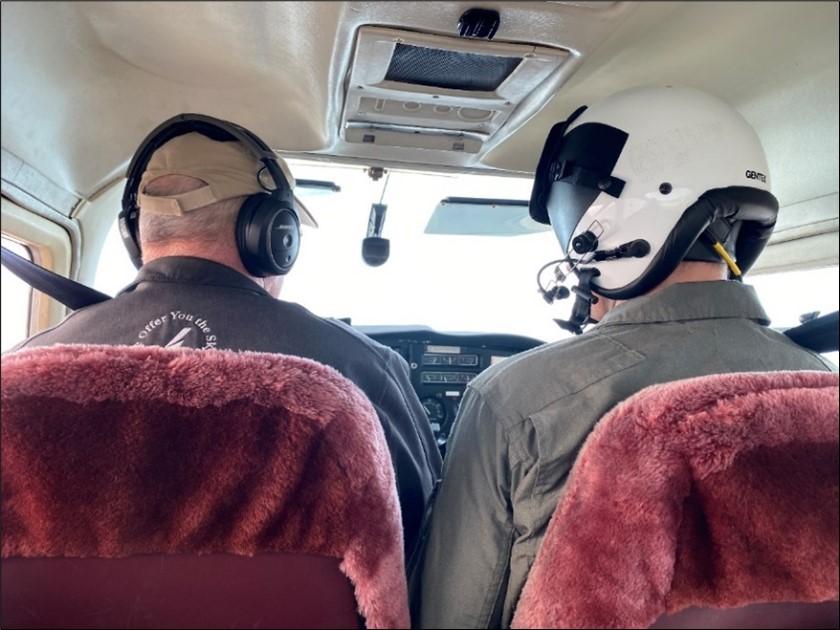

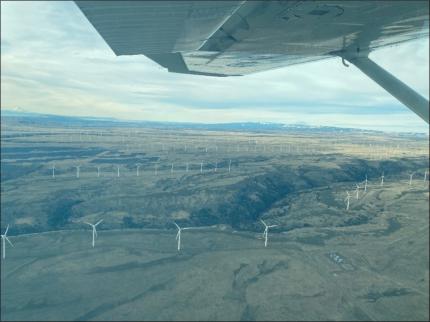
Providing Conflict Prevention and Education
Bear Cubs in Trash: Earlier this winter, Wildlife Conflict Specialist Jacobsen received a report of two bear cubs that were rummaging through trash daily in a mobile home park. Camera surveillance did suggest that these cubs were by themselves every time they were found at the residences. Jacobsen set up a trap to catch the cubs. On the second day, Jacobsen ended up catching an adult female black bear in the trap. Further investigation indicated that the female bear had been lactating this summer, meaning that she likely had cubs nearby. A trail camera that Jacobsen placed over the trap indicated that the two cubs in question had spent several hours sitting outside the trap after their mother was captured. Jacobsen held the female bear in the trap for another day as a hazing tool to dissuade her from visiting the mobile home park again. Jacobsen, Aubrey, and Kolenberg then released the female bear a short distance down the road. No complaints of bear activity in the area had been received by WDFW after the capture incident.
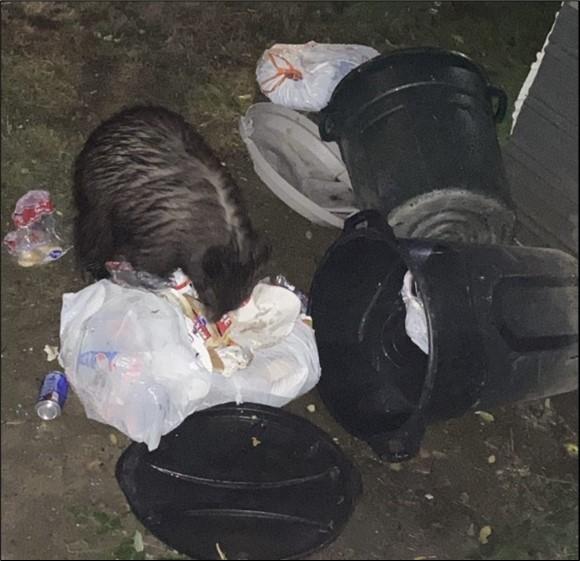
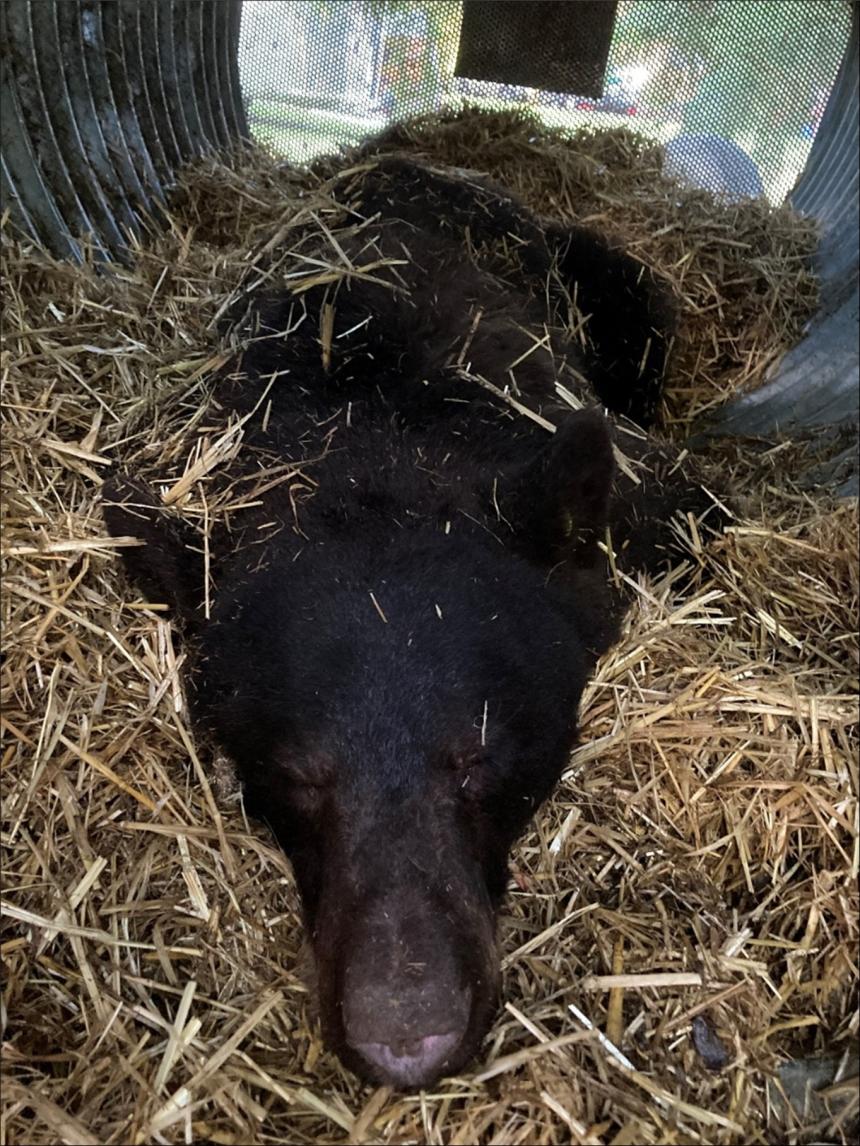
Injured Deer: Wildlife Conflict Specialist Jacobsen responded to a report of an injured or sick deer in Goldendale. Jacobsen found the deer next to a residence. The deer was in extremely poor body condition and had several lumps and contusions on its hind legs, which prevented the deer from standing up straight or walking properly. Jacobsen euthanized the juvenile deer and disposed of the carcass.
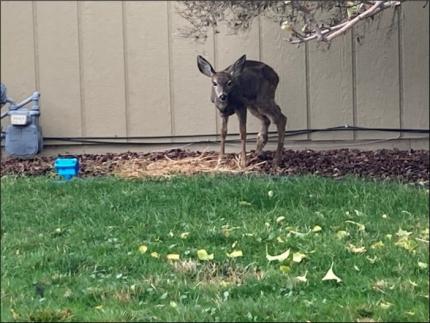
Damage Prevention Cooperative Agreements: Wildlife Conflict Specialist Jacobsen and Technician Kolenberg met with several different landowners in GMUs 554, 568, 578, and 382 to enroll landowners in Damage Prevention Cooperative Agreements and to discuss methods of preventing deer and elk damage to commercial crops.
Elk Damage to Hay Fields: A landowner in GMU 574 contacted Wildlife Conflict Specialist Jacobsen to report extensive elk damage to a newly planted hay seeding. The landowner had been attempting to haze elk with explosives, but the effectiveness of the tool had recently decreased. At the landowner’s request, Jacobsen deployed a youth hunter from the Region 5 Elk Damage Pool to harvest an elk on the property. The youth hunter successfully harvested her first-ever elk with a well-placed, 250-yard shot.

Deer Damage to Orchards: Wildlife Conflict Specialist Jacobsen deployed a master hunter from the Region 5 Master Hunter Deer Damage Pool to a crop damage situation in GMU 373 on the edge of Klickitat County. Several deer were causing extensive damage to apple tree buds at a commercial produce orchard. The master hunter was able to successfully harvest a female mule deer on the hunt.
Bear in Chicken Feed: Wildlife Conflict Specialist Jacobsen received a complaint regarding a bear that had torn into a chicken coop, killed a couple of chickens, and consumed a large quantity of chicken feed. The bear should have been in hibernation but had decided to take advantage of some free and easily accessible calories. Jacobsen arranged to meet the landowner later that week to construct a temporary electric fence around the perimeter of the coop to keep the bear out and hopefully force it to decide to hibernate. However, a large snow event occurred before Jacobsen was able to make it to the residence and the residence became inaccessible to vehicle traffic. The landowner did not report any additional bear damage complaints after the snow event occurred.
Turkey Complaint: Wildlife Conflict Specialist Jacobsen received an urban turkey complaint in the city of Goldendale. Jacobsen provided advice on methods of deterring turkeys from residences. A few weeks later, Jacobsen counted roughly 60 turkeys amongst the houses in the area where the complaint originated.
Elk Damage to Orchards: An orchard manager in Klickitat County contacted Wildlife Conflict Specialist Jacobsen regarding a herd of approximately 30-40 elk that had broken into a pear orchard. The orchard was completely fenced with eight-foot elk fencing but the elk had managed to find their way in somehow. Jacobsen, the landowner, and the landowner’s staff members attempted an elk drive to push the elk out of the orchard, through an open gate, and across a busy highway with local law enforcement staff members providing traffic control. However, the elk had other plans and eventually created their own exit through the orchard fence on the other side of the orchard. The elk continued to access the orchard several times over the next two weeks. The landowner was able to successfully remove an elk with a kill permit and a master hunter with a treponeme-associated hoof disease management tag was able to harvest an elk with hoof disease in the orchard as well. At that point, the snow had mostly melted from the surrounding areas and the elk left the orchard in a hurry. The landowner patched all the known holes and access points in the fence that he was aware the elk used.
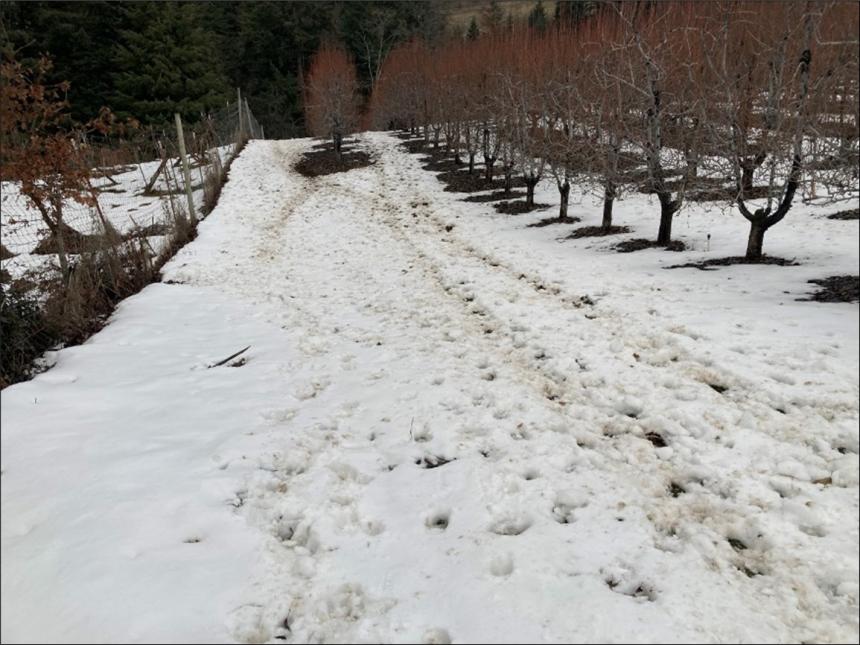
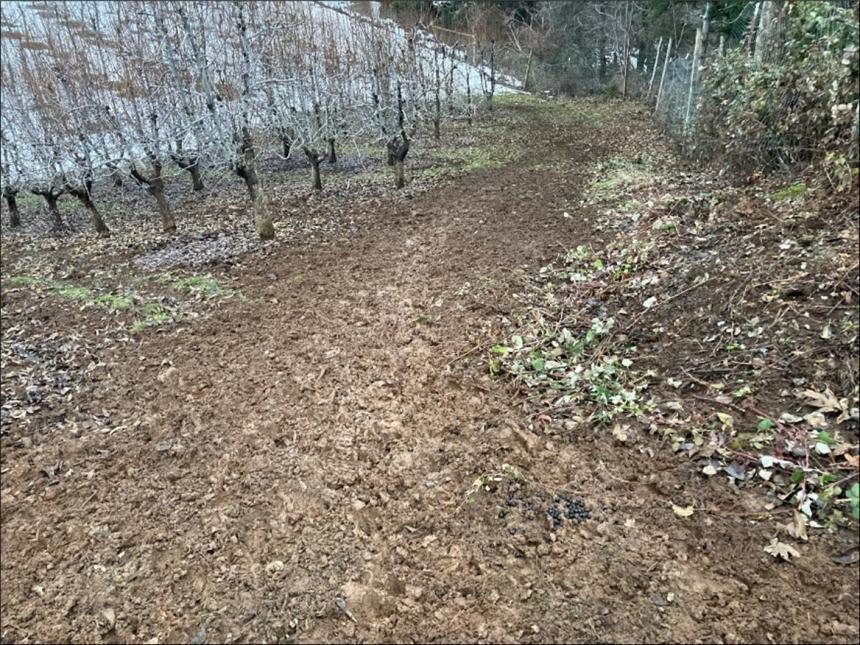
Depredation Investigation: Wildlife Conflict Specialist Jacobsen, Biologist Spence, and Officer Bolton conducted a depredation investigation of a young steer in Klickitat County. After performing a necropsy on the carcass, the cause of death was determined to be non-wildlife related, but still unknown.
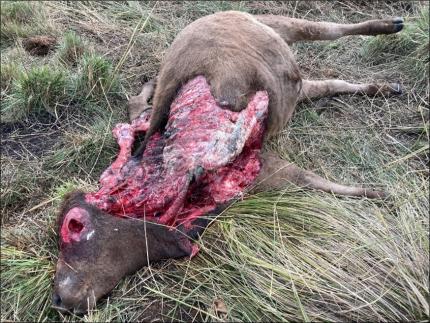
Missing and Injured Dogs: A concerned landowner contacted Wildlife Conflict Specialist Jacobsen about a dog that was injured and another that went missing inside a fenced-in yard in the Vancouver area of Clark County. Both dogs were small breeds. The landowner suspected that coyotes were to blame. Jacobsen provided advice on living in coyote country and keeping pets safe.
Bear in Bird Feeders: A landowner contacted Wildlife Conflict Specialist Jacobsen to complain about a bear getting into their bird feeders. Jacobsen told the landowner to take the bird feeders down and to put them away.
Cougar Concerns: Wildlife Conflict Specialist Jacobsen was contacted by managerial staff members at a Clark County camping association regarding frequent cougar sightings over the past couple of weeks. The camping association has a long history of deer feeding issues on the premises, which likely drew the cougar into the area. Jacobsen is continuing to work with the staff members and residents at the camping association to resolve the deer feeding and cougar presence issue.
Landowner Site Visit: Wildlife Conflict Specialist Jacobsen and Conflict Technician Kolenberg met with a landowner in Skamania County regarding deer damage to her produce operation. Jacobsen and Technician Kolenberg discussed various hazing tools as well as fencing options with the landowner.
Elk Complaint: Wildlife Conflict Specialist Jacobsen was contacted by a landowner in Clark County who utilizes his property for forestry operations. The landowner was concerned about the elk damage to his newly planted cedar and redwood seedlings. Industrial forest operations are not eligible for crop damage claims or landowner permits, but Jacobsen was able to come up with a solution to assist the landowner in hazing elk off his property. Jacobsen contacted several of the master hunters who had been drawn for the Region 5 Master Hunter Hoof Disease hunt to see if they would be interested in removing an elk with hoof disease from the property. Jacobsen was able to reach a master hunter who had not yet filled his hoof disease tag and had been out hunting for a hoof-diseased elk in the eastern part of the region. The hunter was on his way back home and made a detour to the property. Within a couple hours of receiving the call from Jacobsen, the master hunter managed to find and harvest a cow elk with symptoms of hoof disease. Thanks to the master hunter for the quick response time and efficient hunting and hazing.
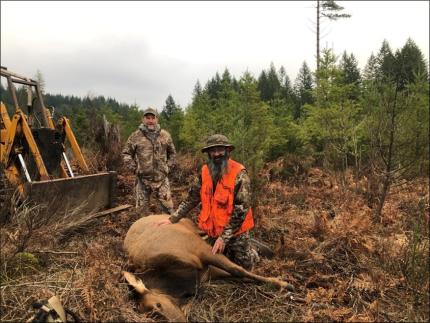
Injured Deer: Wildlife Conflict Specialist Jacobsen and Officer Nelson have received multiple reports of a deer in Klickitat County with a facial malformation. The members of the public reporting the deer have been concerned about possible disease infection, but the deer’s abnormality appears to have been caused by some sort of external injury or trauma. The deer has been observed with this injury for several weeks now, but the facial trauma now appears to be infected, the deer’s behavior is changing, and its body condition is declining. Jacobsen and Officer Nelson will coordinate on an effort to euthanize the deer soon if the deer continues to hang around the area.
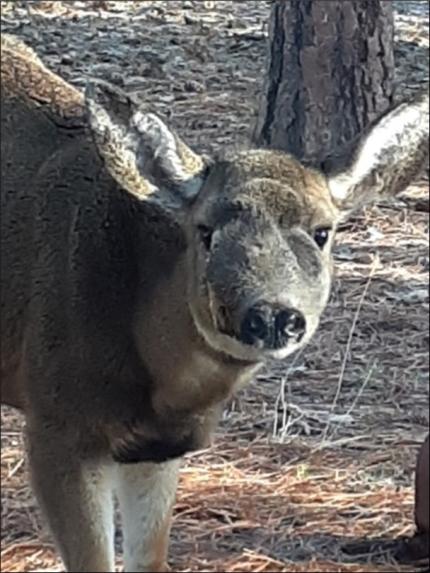
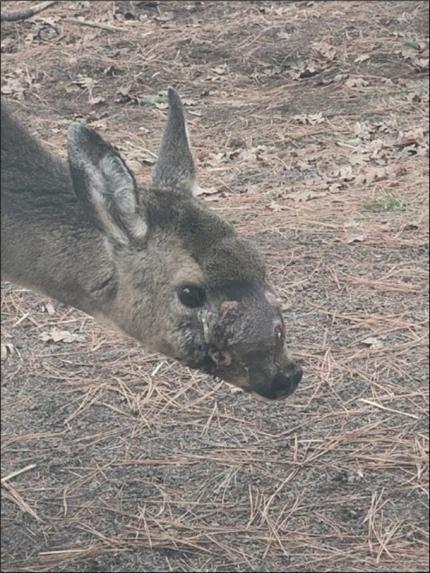
Treponeme-Associated Hoof Disease Elk: Wildlife Conflict Specialist Aubrey responded to a report of an injured elk. The elk had treponeme-associated hoof disease and was no longer mobile. Aubrey euthanized the elk and removed the carcass from the property with the help of a few deputies.
Elk Damage: Wildlife Conflict Specialist Aubrey worked with landowners experiencing elk damage to crops throughout District 10. Damage pool hunters were deployed in several cases to assist landowners, and permits were issued to landowners to address concerns.
Conserving Natural Landscapes
Storm Clean-up at Shillapoo: A warm weather trend provided the perfect opportunity for wildlife area staff members to clean up the many downed trees and other fallen debris resulting from recent high wind events. Assistant Manager Risley and Assistant Manager Breitenstien spent multiple days cutting, stacking, and cleaning up multiple fallen trees at Shillapoo Wildlife Area. A few large trees were salvaged and put aside to be used as turtle logs in the sloughs and waterways at Shillapoo. As the name implies, these logs serve as floating platforms for resident turtles to seek refuge and warm themselves in the sun. The area’s beavers also enjoy these floating wood features.
Unsticking a Stuck Beaver Stick at Shillapoo: A seemingly simple task became a large-scale undertaking when Assistant Manager Breitenstein and Assistant Manager Risley attempted to remove a large stick that had likely been stuffed into a drainpipe by a resident beaver. The stick had gotten stuck in the water control valve, making the valve inoperable. Over multiple days, many improvised contraptions and ropes were used to dislodge the stick. In a last and final attempt, the stick was dislodged renewing staff members spirits.
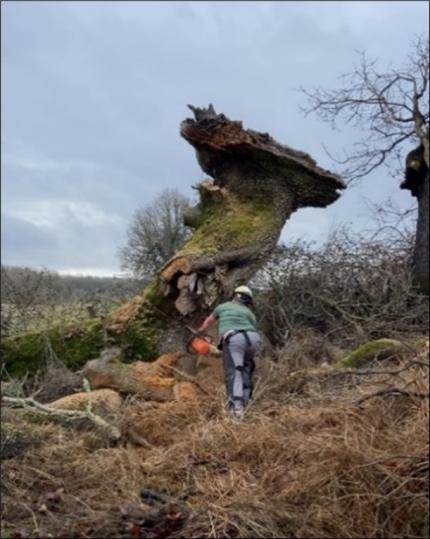
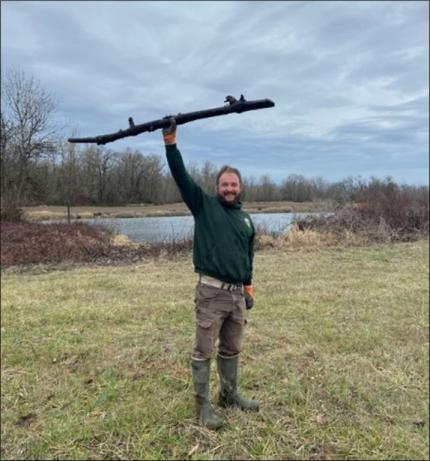
Mount Saint Helens Wildlife Area Monitoring: In addition to storm clean up, regular monitoring of remote units is essential to keeping these units accessible to the public. Assistant Manager Risley cleared access roads to the Mudflow Unit, Hoffstadt Unit, Nellie Corser Unit, and cleaned trash from the Hall Road and Canal Road Units. While visiting the Canal Road Unit, a few wild horses were observed grazing close to the Wildlife Area boundary.
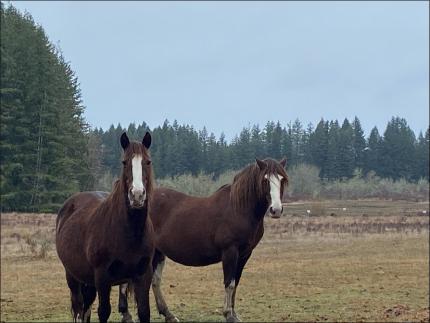
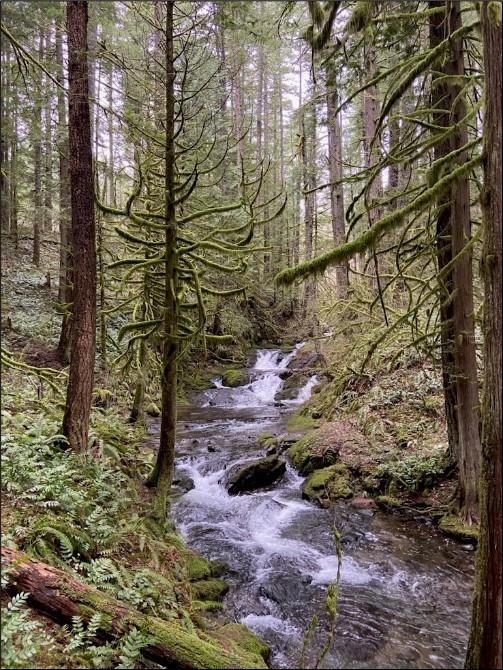
Providing Education and Outreach
Wolf Workshop: Wildlife Conflict Specialist Jacobsen partnered with Defenders of Wildlife and Strategic Ranching to host a workshop titled “Strategic Ranching on a Landscape with Wolves” in Goldendale. The workshop featured presentations by WDFW, Integrated Grazing Management, and other organizations to help prepare Klickitat County livestock producers for a future of ranching cattle on a landscape where wolves are present. The workshop was well-attended, with over 40 members of the public participating.
Managing Wildlife Populations
Dusky Canada Goose and Snowy Plover: Biologists Novack and completed another round of dusky goose surveys. Biologist Cent along with Science Division Scientist Pearson conducted the winter plover survey at various beaches within the district. Midway beach had a good presence of birds.
Avian Flu: Unfortunately, while surveying for plovers, personnel came across a sick sanderling which was captured and submitted to the animal rehabilitation facility. Samples from this bird confirmed infection by high pathogenic avian influenza (HPAI).
Oregon Spotted Frog Annual Partnership Meeting: Biologist Tirhi represented District 11 at the annual meeting of the Oregon Spotted Frog Working Group, comprised of federal, state, county, city, provincial, and volunteer groups working on the recovery of state and federally listed spotted frogs. Tirhi presented survey results, trends, and habitat restoration work conducted by her and Biologist Butler at several drainages occupied by spotted frogs in Thurston County. The working group annual meeting is an excellent opportunity to collaborate on this very important recovery work.
Oregon Spotted Frog Data Collection Meeting: Biologists Tirhi and Butler worked with Headquarter Database Manager Krock to address outstanding data questions regarding past spotted frog surveys to start with a clean database for the beginning of the 2023 frog season in March. Tirhi also met separately with headquarter staff members Krock and Simper and personnel from the USFWS Partners for Fish and Wildlife Program to coordinate collaborative spotted frog data collection and sharing beginning in 2023.
Wolf Monitoring: Biologist Tirhi and Butler spent half a day maintaining and prepping field machinery for 2023 wolf surveys and one full day conducting snow tracking and camera deployment for wolves in the White River drainage. No wolf packs have been confirmed in District 11, but various credible reports continue to be reported by staff members and public.
Providing Recreation Opportunities
Sooty Grouse Surveys: Biologists Tirhi and Butler participated in a planning meeting hosted by Headquarter Section Manager Garrison to conduct sooty grouse surveys across western Washington beginning in 2023.
Access Team Activities in Pierce County: The access team continues vegetation management at Pierce County sites. Mowing, brush cutting, tree trimming, and chipping was the focus at these sites. Wildlife Conservation Corps personnel serviced monofilament recycling bins and assisted with painting the restroom and kiosk at Kapowsin Lake.
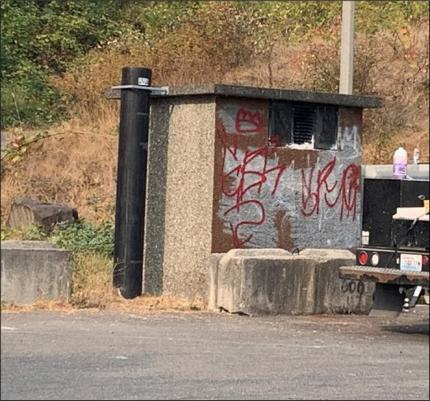
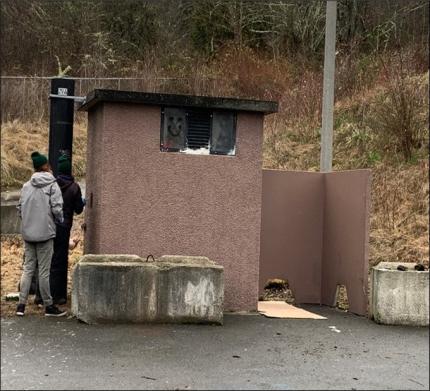
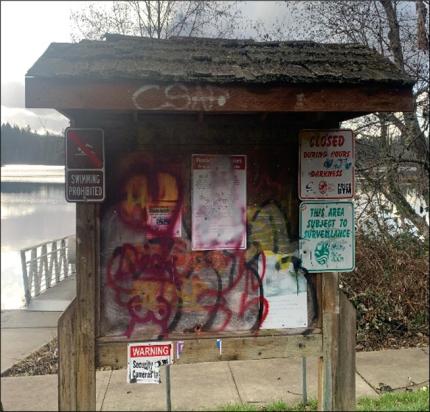
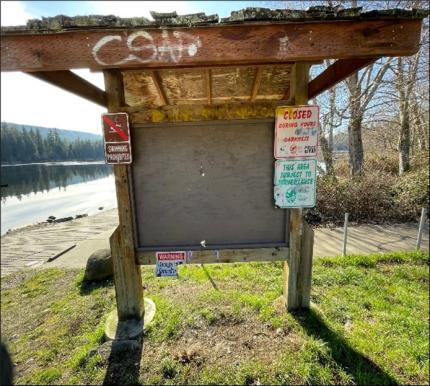
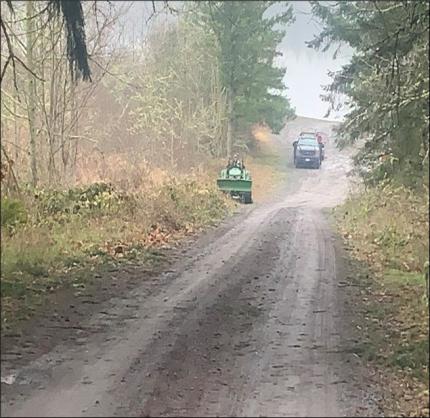
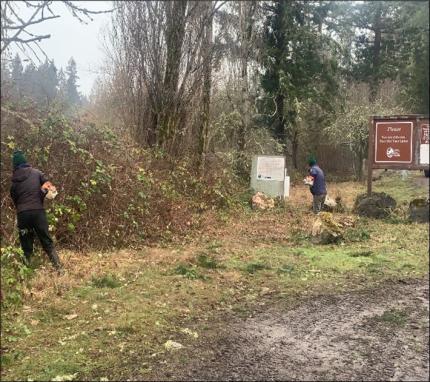
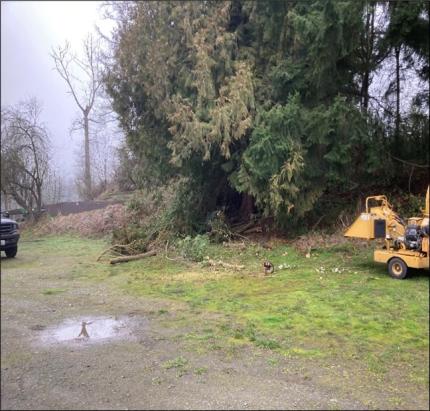
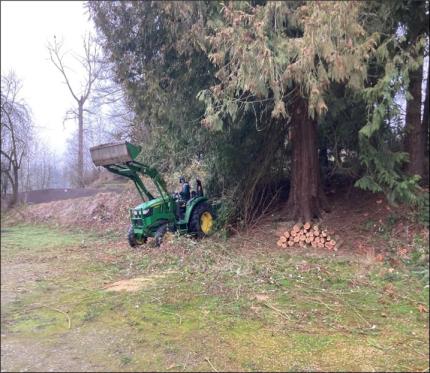
Access Team Activities in Grays Harbor: After much work by Enforcement Officers Dean and Mcomber, Access Team loaded and disposed of an abandoned boat and van left at access areas. Ecology blocks were used to secure the entrance at the South Montesano ramp, which is temporarily closed for use. A reopening date will be determined after the threat of seasonal flooding concerns diminish later in the year.
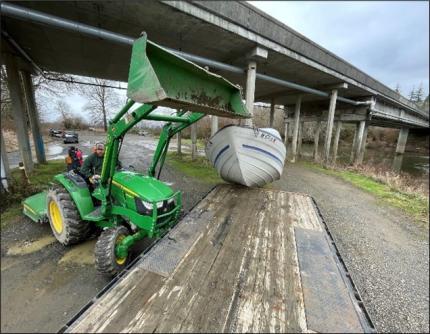
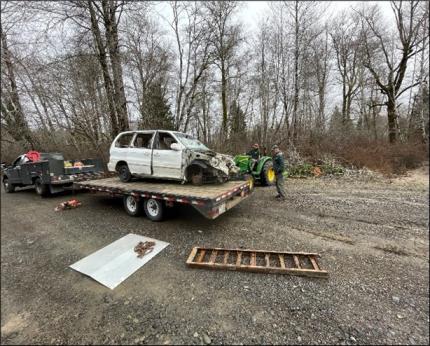
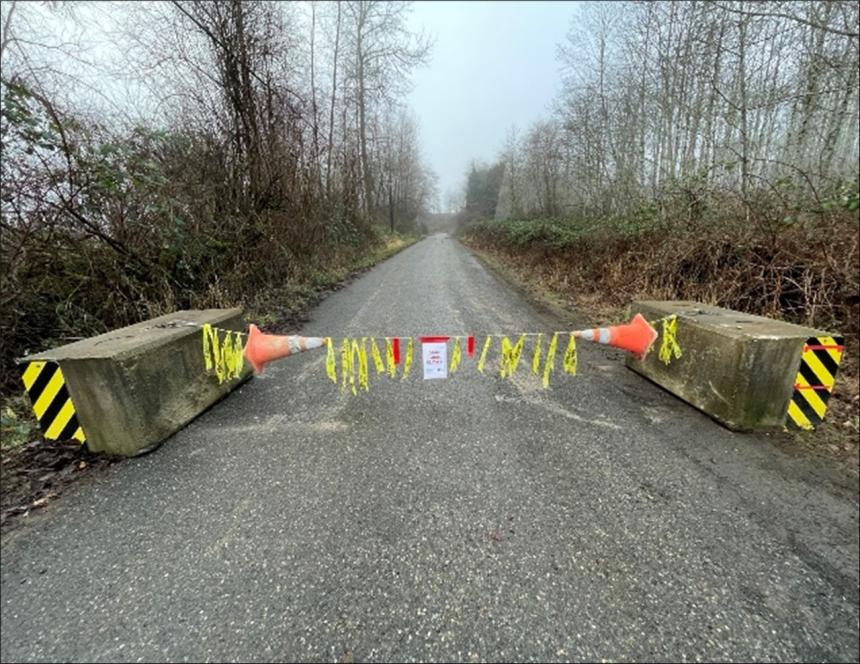
Conserving Natural Landscapes
Protection Island: Wildlife Area Manager Laushman visited the Protection Island Unit of the North Olympic Wildlife Area with restoration specialist and technician Cook and Morgan to re-visit areas treated in November.
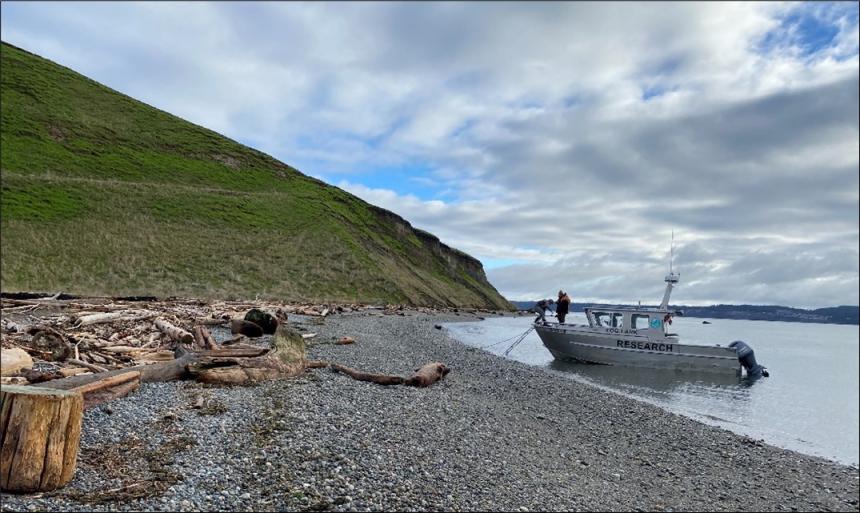
South Puget Sound: Wildlife Area Manager Laushman and Natural Resource Technician Morgan tackled large infestations of Himalayan blackberries around the Western Pond Turtle habitat at the South Puget Sound Wildlife Area unit. Removal of the blackberry opened an orchard area from when the unit was a homestead and will help reduce the spread of blackberries around the ponds.
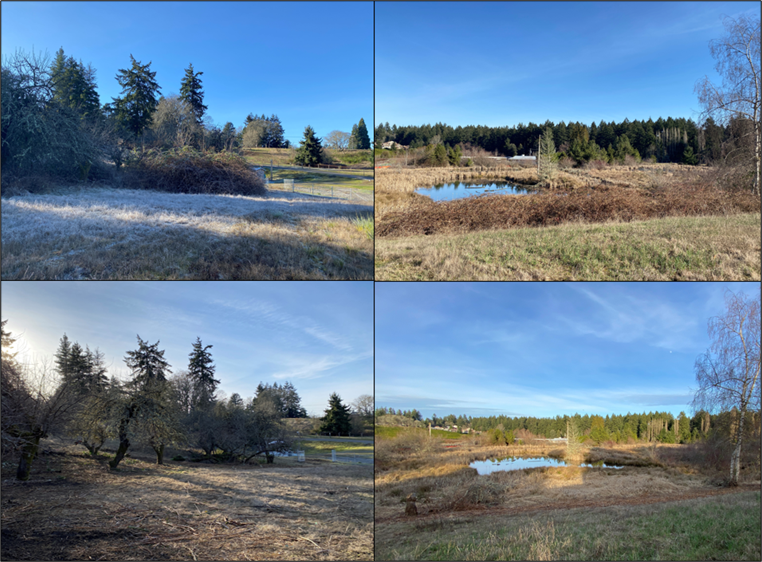
North American Wetlands Conservation Act: Biologist Novack continues coordination and collaboration with Ducks Unlimited on identifying restoration and acquisition projects for a North American Wetlands Conservation Act grant proposal.
Chehalis Unit: Biologist Novack met with a landowner adjacent to our existing Chehalis Unit who is now agreeable to acquisition by WDFW. The parcel is already within an area approved through Lands 2020. Funding is available through Duck Stamp.
Pacific County: Biologist Novack met with USFWS and various land trusts and non-profit groups working in Pacific County. Many land acquisitions for conservation purposes are in the works for this year.
Oregon Spotted Frog Habitat Protection: Biologists Tirhi and Real Estate Specialist Buck met with two landowners on whose property Oregon spotted frogs have bred for many years and for which Biologist Tirhi has received funds to purchase a Conservation Easement. The objective of the meeting was to answer any landowner questions and move the acquisition project forward to the next step of appraisal.
Centralia Mine Acquisition Technical Team: Biologist Tirhi spent time receiving and inputting WDFW Centralia Mine Acquisition Technical Team member edits into the first update to the grassland management sections of the mining permit intended to allow WDFW and Centralia Mine to move forward on the possible conversion of the mine to an eventual WDFW wildlife area.
Violet Prairie Unit of the Scatter Creek Wildlife Area Management Plan: Biologist Tirhi drafted her assigned species overview sections for the new Violet Prairie Management Plan being drafted by the Wildlife Program.